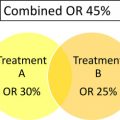Neuroendocrine tumors (NETs) of the gastrointestinal (GI) tract have a propensity for producing hepatic metastases. Most GI NETs arise from the foregut or midgut, are malignant, and can cause severe debilitating symptoms adversely affecting quality of life. Aggressive treatments to reduce symptoms have an important role in therapy. Patients with GI NETs usually present with inoperable metastatic disease and severe symptoms from a variety of hormones and biogenic amines. This article describes intra-arterial hepatic-directed therapies for metastases from NETs, a group of treatments in which the therapeutic and/or embolic agents are released intra-arterially in specific hepatic vessels to target tumors.
Key points
- •
Intra-arterial therapies for unresectable liver metastases from neuroendocrine primary tumors are supported by level 2a medical evidence (National Cancer Institute) regarding symptom control and imaging response.
- •
There is insufficient medical evidence showing which intra-arterial therapy (transarterial embolization [TAE], transarterial chemoembolization [TACE], transarterial radioembolization [TARE]) provides the highest response rate, progression-free survival, or overall survival.
- •
TARE produces less toxicity and has similar efficacy to TAE and TACE.
- •
Intra-arterial therapies are an important aspect of managing metastases from neuroendocrine tumor liver disease in all stages of disease, including asymptomatic, first-line, salvage, and palliation scenarios.
Stay updated, free articles. Join our Telegram channel

Full access? Get Clinical Tree





